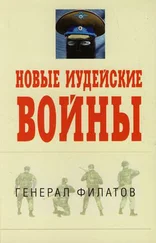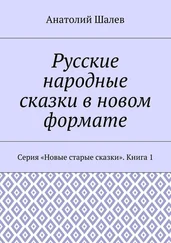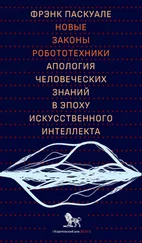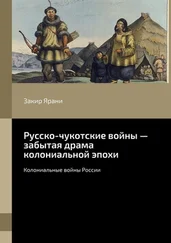65
Freeman C., Clarke J., Soete L. Unemployment and Technical Innovation: A Study of Long Waves and Economic Development. London: Frances Pinter, 1982; Perez-Perez C. Micro-electronics, long waves, and world structural change // World Development. 1985. Vol. 13. No. 3.
66
См.: Mayer Margit. The shifting local political system in Europe
an cities // Mick Dunford and Grigoris Kafkalas (eds). Cities and Regions in the New Europe: The Global-Local Interplay and Spatial Development Strategies. London: Belhaven Press, 1992; а также: Castells Manuel, Hall Peter. Technopoles of the World: The Making of Twenty-First-Century Industrial Complexes. London: Routledge, 1994.
67
Информацию по транснациональным движениям и НПО
см. в ежегодниках Global Civil Society, издаваемых издательствами Oxford University Press (с 2001 по 2003 г.), Sage (с 2004 по 2009 г.) и Palgrave Macmillan (в настоящее время). См. также: www.gcsknowledgebase.org.
68
Bukharin Nikolai. Economics of the Transformation Period. New York: Bergman, 1971. Бухарин Н.И. Экономика переходного периода. М.: Государственное издательство, 1920. С. 24.
69
Reich Robert. The Work of Nations: Preparing Ourselves for 21st
Century Capitalism. London: Simon & Schuster, 1993. P. 97.
70
MelucciAlberto. Nomads of the Present: Social Movements and In
dividual Needs in Contemporary Society. London: Hutchinson Radius, 1989.
71
Touraine Alain. The Post-Industrial Society. New York: Random
House, 1971.
72
Reich Robert. The Work of Nations. P. 178.
73
Гидденс называет эти символы «разъединяющими механизмами». Ключевой характеристикой эпохи модерна было то, что он называет «пространственно-временным дистанцированием», когда социальные отношения могут строиться с «отсутствующими» другими. Он определяет глобализацию как растягивание пространственно-временного дистанцирования. См.: Giddens Anthony. The Conditions of Modernity. Cambridge: Polity, 1990.
74
См.: Cynthia Brown and Farhad Karim (eds). Playing the «Communal Card»: Communal Violence and Human Rights. London and New York: Human Rights Watch, 1995.
75
Omaar Rakiya, de Waal Alex. Rwanda: Death, Despair and Defiance.
London: Africa Rights, 1994. P. 35.
76
Ganguly Sumit. Explaining the Kashmir insurgency: political mobi
lisation and institutional decay // International Security. 1996. Vol. 21. No. 2.
77
28. Kumar Radha. Nationalism, nationalities and civil society // Nationalism and European Integration: Civil Society Perspectives. Helsinki Citizens’ Assembly Publication Series 2. Prague, 1991.
78
31. Appiah Kwame Anthony. Cosmopolitan patriots. P. 618.
79
Herbst Jeffrey. Responding to state failure in Africa // International Security. 1996-1997. Vol. 21. No. 3. P. 121-122.
80
Cynthia Brown and Farhad Karim (eds). Playing the «Communal Card»: Communal Violence and Human Rights. London and New York: Human Rights Watch, 1995.
81
O’Kane Maggie. The terrible day when Frenki’s Boys came calling // The Guardian. 19 June 1999.
82
Keen David. When war itself is privatized.
83
Подробности этой истории см.: Shearer David. Private Armies and Military Intervention, Adelphi Paper 316. London: International Institute for Strategic Studies, 1998.
84
International Institute for Strategic Studies, Military Balance 19961997. London: Brasseys, 1997. P. 237.
85
Цит. по: Simpkin Richard. Race to the Swift: Thoughts on Twenty-First Century Warfare. London: Brasseys, 1985. Р. 311.
86
Важным исключением, которое широко упоминается, был британский опыт в Малайе. Впрочем, революционное движение было довольно ограниченным, состоя главным образом из китайского меньшинства. Тем не менее интересен метод, которым — в противоположность другим практикам борьбы с повстанцами — британцы копировали революционную тактику, пытаясь завоевать «сердца и умы» обещанием независимости и применяя подобную же военную тактику к партизанам. См. там же.
87
Brown Cynthia, Karim Farhad. Playing the «Communal Card». P. 9.
88
Lacina Bethany, Gleditsch Nils Petter. Monitoring Trends in Global Combat: A New Dataset of Battle Deaths // European Journal of Population. 2005. Vol. 21. No. 2-3.
89
Simpson John. In the Forests of the Night: Encounters in Peru with
Terrorism, Drug-running and Military Oppression. London: Arrow Books, 1994.
90
Keen D. When war itself is privatized.
91
Норвежский психолог описывает сеанс с «Иваном», мальчиком из Боснии и Герцеговины:
Как можно говорить с девятилетним мальчиком о том, что его отец застрелил своего лучшего друга? Я попросил дать его собственное объяснение, он посмотрел мне прямо в глаза и сказал: «Я думаю, они пьют что-то, что отравляет их мозги». Однако неожиданно добавил: «Но теперь они все отравлены, ведь, я уверен, это в питьевой воде, и нам реально надо понять, как очистить загрязненные водоемы». Когда я спросил его, не отравлены ли дети не меньше взрослых, он покачал головой и сказал: «Нет, вовсе нет. У них меньше тела, поэтому они меньше заражаются, и я обнаружил, что маленькие дети и младенцы, пьющие почти одно молоко, ничуточки не отравились». Я спросил его, слышал ли он когда-нибудь слово «политика»? Он почти подскочил на месте, посмотрел на меня и сказал: «Да. Это же название этой отравы» (цит. по: Smith Dan. The State of War and Peace Atlas. Harmonds-worth: Penguin, 1997. P. 31).
92
Ряд авторов ссылаются на хищнический характер современной военной экономики. См.: Bougarel Xavier L’Anatomie d’un conflit. Paris: La Decouverte, 1995, которого я цитирую в третьей главе. Также см.: Naylor R. T. The insurgent economy: black market operations of guerrilla organizations // Crime, Law and Social Change. 2007. No. 20; Lewis Peter. From pre-bendalism to predation: the political economy of decline in Nigeria //Journal of Modern African Studies. 1996. Vol. 34. No. 1.
Читать дальше










